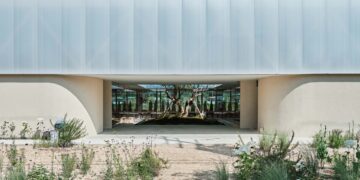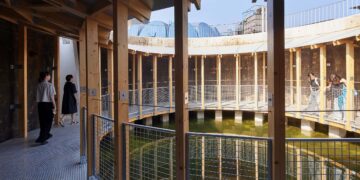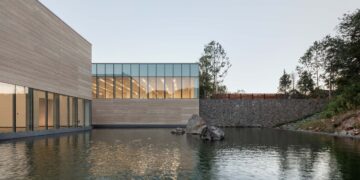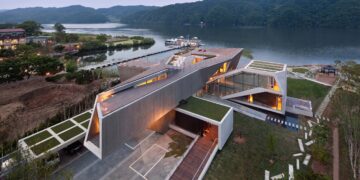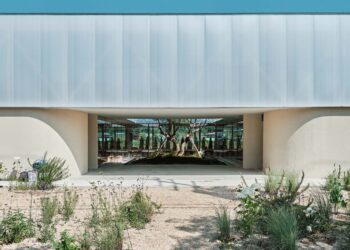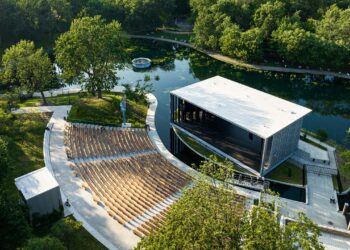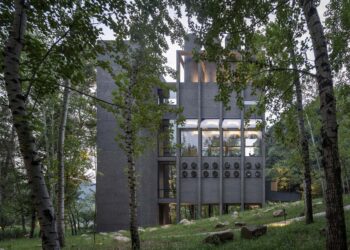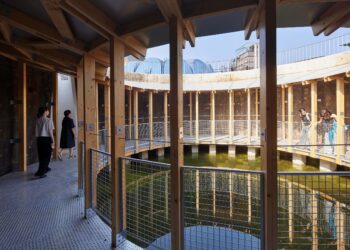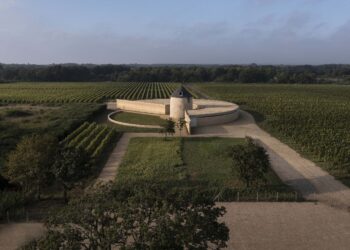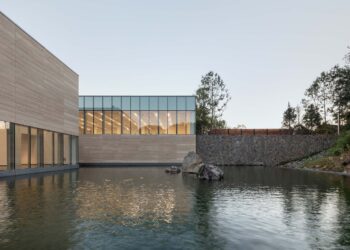Al Janoub Stadium

Al Janoub Stadium – by Zaha Hadid Architects (ZHA) and Aecom – the first stadium commissioned for the 2022 FIFA World Cup in Qatar, was inaugurated on 16 May 2019. The stadium will host the group and quarter-final matches of the tournament.
The client’s brief was for a 40,000-seat football stadium which could be reduced to a 20,000-seat capacity following the tournament. 20,000 seats is the optimum capacity for legacy use as the home ground to Al Wakrah Sport Club and Qatar Stars national football team. The surplus temporary seats are demountable and intended to be transportable to a developing country in need of sporting infrastructure.







The stadium has an operable roof, of PTFE fabric and cables, and a seating bowl cooling system for use in Qatar’s hot summer months. When deployed, the roof operates like a sail to cover the oculus above the field and create a sheltered environment for football during the summer.
Given the stadium’s context within the coastal city of Al Wakrah, the client asked that its design reflect the maritime traditions and history of the location, in particular, the traditional boat, the dhow. ZHA responded with a design that incorporates these cultural references in an abstract manner and combines them with practical responses to the climate, context and the functional requirements of a football stadium.
The stadium’s roof design is an abstraction of the hulls of dhows turned upside-down and huddled together to provide shade and shelter. This is expressed in the stadium’s envelope geometry, details and materiality, including the roof’s beam structure that echoes the interior structure of a hull.
The facades are slanted outwards, tapered in elevation and reminiscent of the pleating of a dhow’s sails; the large overhang of the stadium’s eaves, that incorporates strips of metal cladding, is reminiscent of the timber boat structure.




The stadium’s opaque roof and wall areas are expressed as pleated cross sections, a feature which has its origins in Arabic motifs and calligraphy; these add texture to the outer shell and emphasize the stadium’s unique geometry. The white or off-white color, with a gloss surface finish, is reminiscent of sea shells and adds texture to the building envelope. The embossed eaves and the lattice screen of the glazed lower-level facades are a metallic bronze, adding richness and depth to the design and paying homage to the traditions and artistry of Islamic craftsmanship.
The stadium sits on a large landscaped podium that takes visitors to the main entry concourse located at the middle of the seating bowl’s tiers. Large parabolic voids within the podium signify different activity zones.
The stadium was designed in conjunction with a new precinct so that it sits at the heart of an urban extension of the city, creating community-based activities in and around the stadium on non-event days. Al Janoub stadium will be a memorable venue and destination during the Qatar 2022 FIFA World Cup and after, at the center of the Al Wakrah community.
Project: Al Janoub Stadium / Location: Al Wakrah, Qatar / Architect: Zaha Hadid Architects / Design: Zaha Hadid, Patrik Schumacher / Project director: Jim Heverin / Project associate, project architect: Johannes Hoffmann / Project team: Annarita Papeschi, Andreas Urff, Antonio Monserrat, Cynthia Du, Edgar Payan, Ermis Chavaltzi, Fernando Poucell, Ganesh Nimmala, George King, Ho-Ping Hsia, Irene Guerra, Jan Klaska, Junyi Wang, Karim Muallem, Karoly Markos, Ming Cheong, Moa Carlsson, Mohamed Al-Jubori, Nastassia Linau, Paulo Flores, Peter Irmscher, Rafael Portillo, Stephane Vallotton, Thomas Soo, Vincent Konate, Yeena Yun, Wen-Kai Li (Kevin) / Client: Supreme Committee for Delivery and Legacy of the 2022 FIFA World Cup QatarTM / Lead consultant: Aecom / Operable roof design consultant: Schlaich Bergermann Partner / Photograph: ©Hufton+Crow, ©Luke Hayes

[powerkit_separator style=”double” height=”5″]

